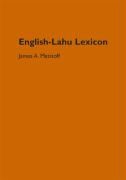Read more
Informationen zum Autor James A. Matisoff ! Professor Emeritus of Linguistics at the University of California! Berkeley! is one of the world's leading authorities on the languages of East and Southeast Asia! especially the Sino-Tibetan family. He is the author of numerous books! monographs! and articles! on topics synchronic and diachronic! grammatical! semantic! phonological! and lexicographical! including: The Loloish Tonal Split Revisited (1972)! The Grammar of Lahu (1973/1982)! Variational Semantics in Tibeto-Burman (1978)! Blessings! Curses! Hopes and Fears: Psycho-ostensive Expressions in Yiddish (1979/2000)! The Dictionary of Lahu (1988)! Languages and Dialects of Tibeto-Burman (1996) and and Handbook of Proto-Tibeto-Burman (2003). He is the Principal Investigator of the Sino-Tibetan Etymological Dictionary and Thesaurus project! and Editor of the journal Linguistics of the Tibeto-Burman Area. He is one of the founders of the annual International Conferences on Sino-Tibetan Languages and Linguistics. He has taught at Columbia and Berkeley! and has directed 28 doctoral dissertations in Asian and general linguistics. Klappentext Lahu is an important minority language of Southeast Asia! belonging to the Lolo-Burmese subgroup of the Sino-Tibetan language family. It is spoken by over 500!000 people in China! Burma! Thailand! Laos and Vietnam.This English-Lahu Lexicon (ELL) is a computer-aided but manually edited "reversal" of the author's monumental Lahu-English dictionary (The Dictionary of Lahu! UCPL #111! 1988! xxv + 1436 pp.)."English-Lahu Lexicon" contains nearly 5400 head-entries and well over 10!000 carefully arranged subentries. Every Lahu expression is provided with a form-class designation to indicate its grammatical function. Eight useful Appendices (e.g. Plant and Animal Names) round out the volume's 450 pages. Zusammenfassung Lahu is an important minority language of Southeast Asia, belonging to the Lolo-Burmese subgroup of the Sino-Tibetan language family. It is spoken by over 500,000 people in China, Burma, Thailand, Laos and Vietnam. This English-Lahu Lexicon (ELL) is a computer-aided but manually edited "reversal" of the author's monumental Lahu-English dictionary (The Dictionary of Lahu, UCPL #111, 1988, xxv + 1436 pp.). English-Lahu Lexicon contains nearly 5400 head-entries and well over 10,000 carefully arranged subentries. Every Lahu expression is provided with a form-class designation to indicate its grammatical function. Eight useful Appendices (e.g. Plant and Animal Names) round out the volume's 450 pages. ...

